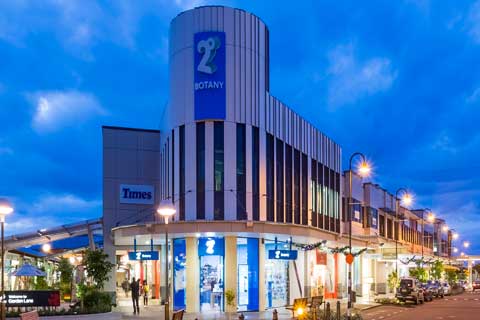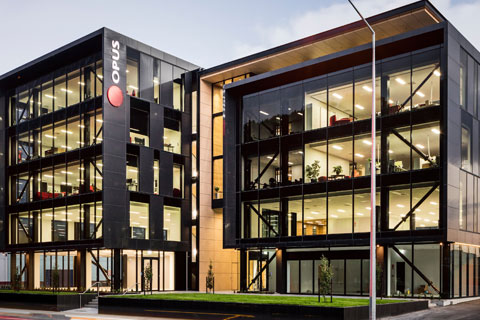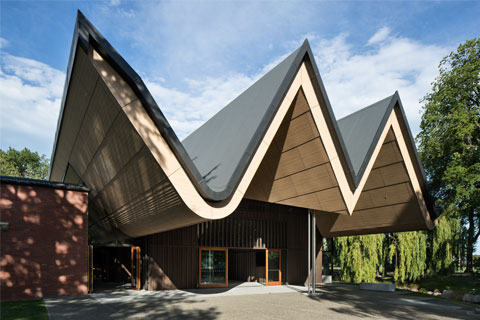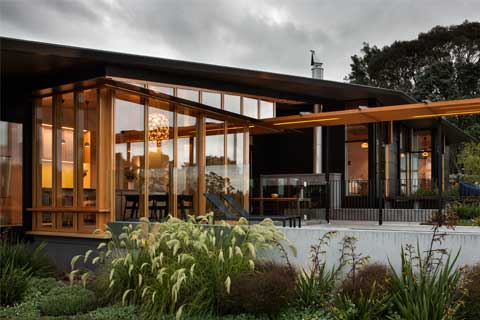- Trespa Meteon FSC Chain of Custody Certificate
- ISO 14001 Certificate of Approval
- ISO 9001 Certificate of Approval
- PEFC Chain of Custody Certificate
- GREENGUARD Certificate
- GREENGUARD Gold Certificate
- Environmental Product Declaration
- Declare Label Trespa Meteon FR Unicolours 8mm
- Declare Label Trespa Meteon FR Printed Decors 8mm
- BREEAM Executive Summary
- LEED Executive Summary
- USDA Biobased Certification
MondoClad Sustainability
MondoClad ® solid aluminium is manufactured from more than 30% recycled material and is supplied as a pre-finished panel, being 100% recyclable at end of use. The paint is applied in a continuous process before the aluminium is fabricated into panels. This minimises the need for additional transportation compared to using a powder coating process.
PVDF coating, a ‘closed loop’ process, efficiently uses its curing ovens to burn and repurpose harmful VOCs as fuel, reducing energy use and pollutants. Composed of a fluoropolymer, acrylics, pigments, catalysers, and additives, PVDF’s water-insoluble nature prevents groundwater contamination, and its environmentally neutral particles pose no harm. UV radiation can break down the surface acrylic, minimizing environmental impact.
Aluminium is entirely recyclable, maintaining its quality without degradation. Recycling it uses merely 5% of the initial energy and produces only 5% of the greenhouse gases compared to new production. This efficiency is why around 75% of all aluminium ever made is still in circulation.
Recycling aluminium brings economic and environmental benefits, conserving natural resources, reducing environmental impact, and easing landfill stress.
A Lifetime of Service Aluminium building products are made from alloys that are weatherproof, corrosion-resistant and immune to the harmful effects of UV rays, ensuring optimal performance and longevity. Perhaps one of the most famous examples of aluminium’s durability is the dome of San Gioacchino ai Prati Castello Church in Rome. Clad in aluminium sheets in 1898, today, more than 100 years later, it’s still in pristine condition
PHD (Product Health Declaration) : Product Health Declaration discloses chemical hazards in products used in workplaces and in homes. It is formally recognised by the Green Building Councils – Green Star rating tools.
Downloads
PHD (Product Health Declaration)
For more information on sustainability contact Décortech






